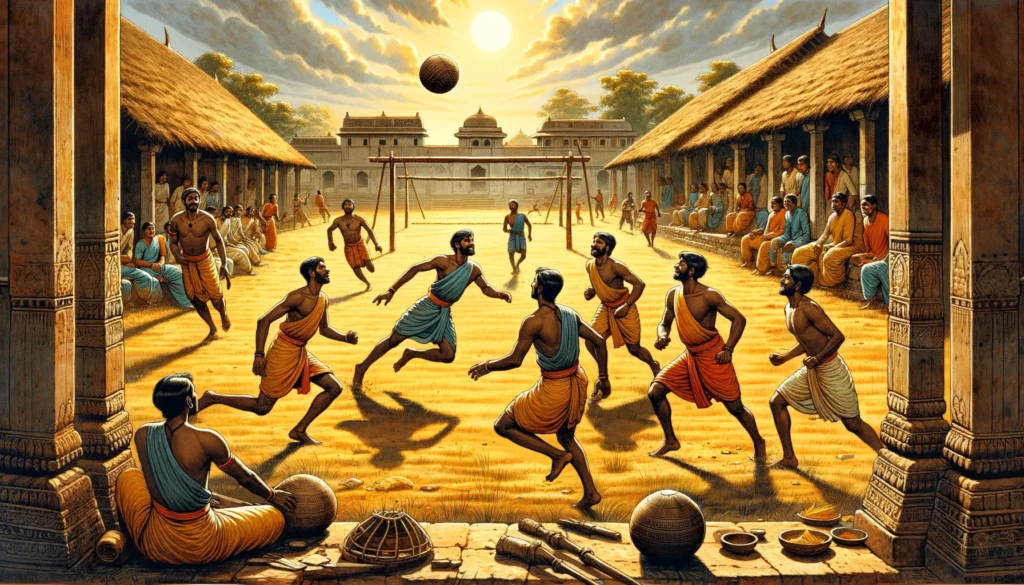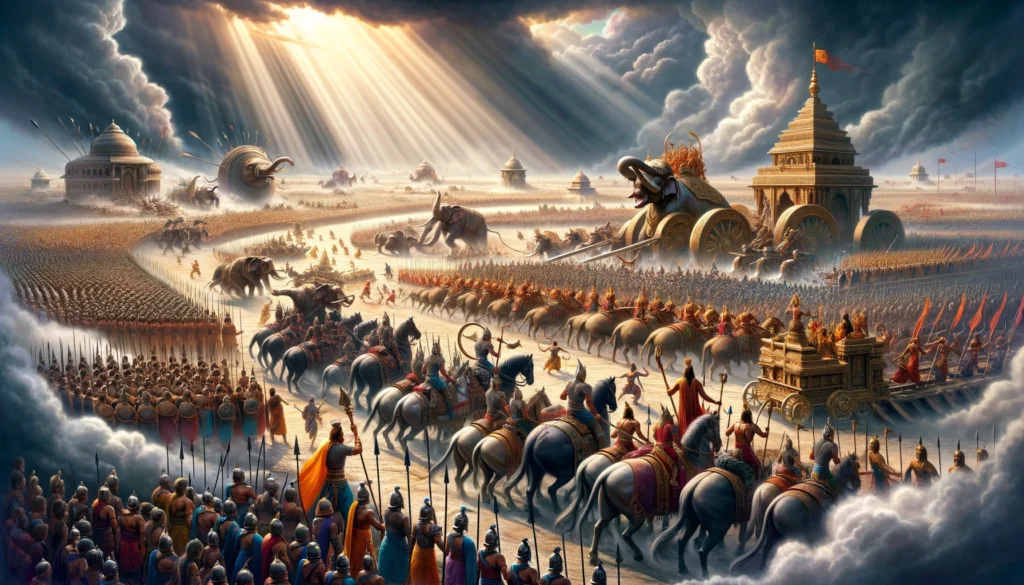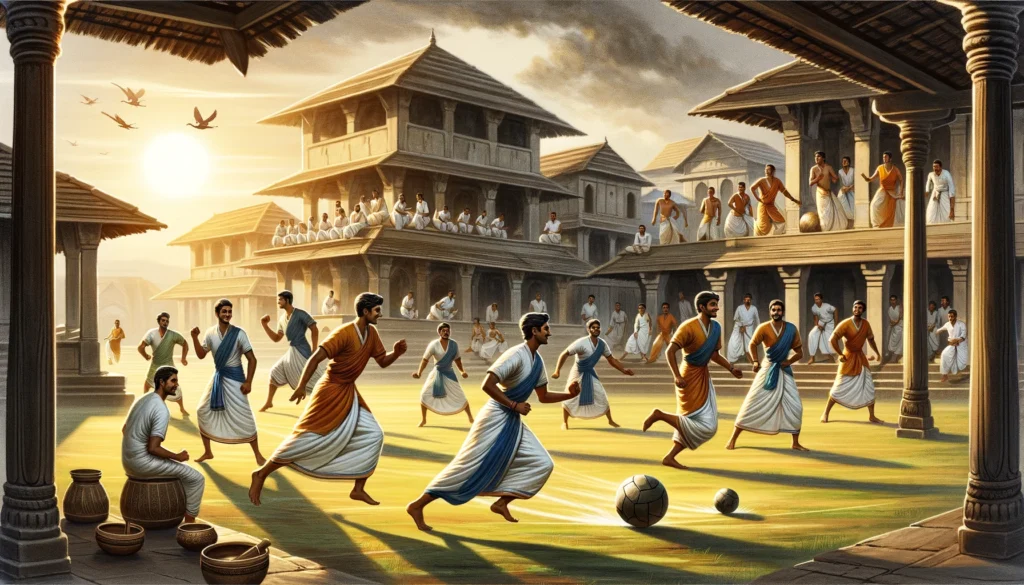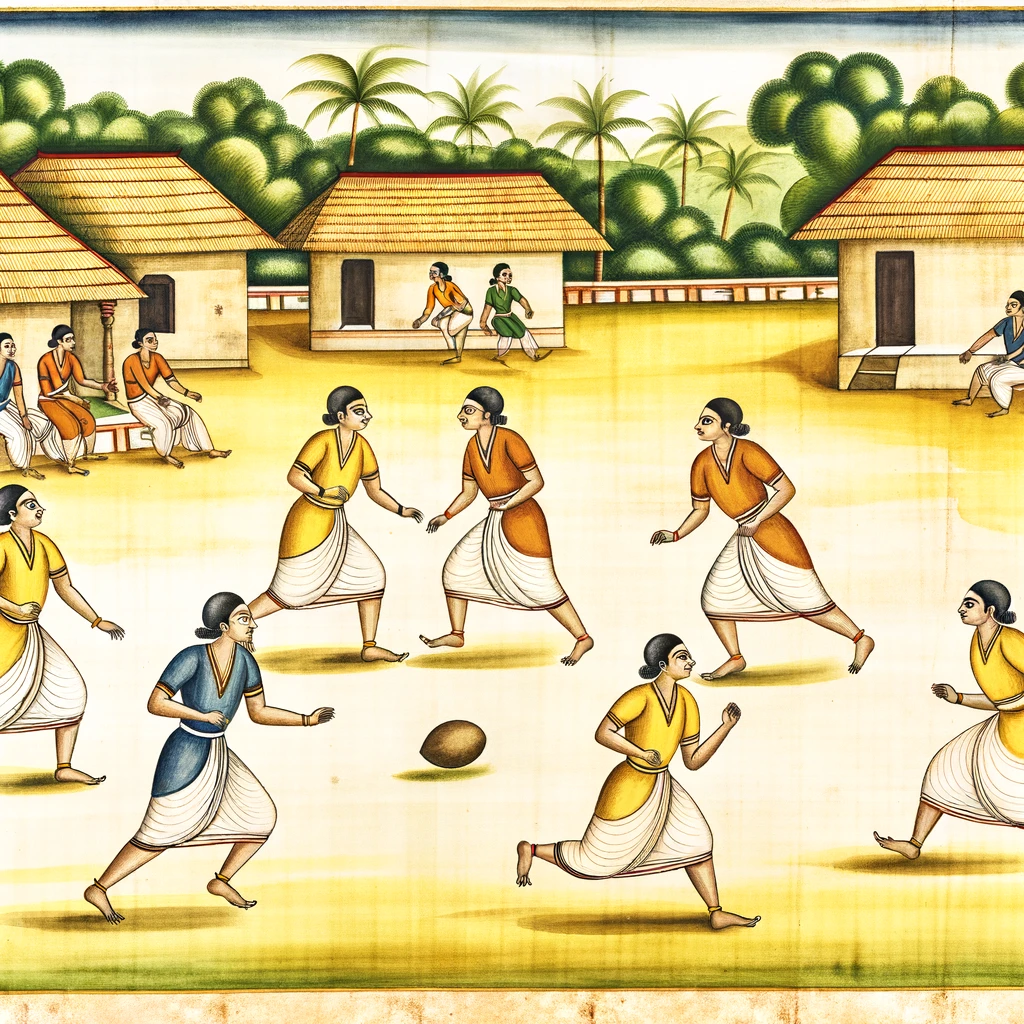
Cricket might reign supreme in modern India, but football’s presence goes surprisingly far back in the country’s history. Forget European origins, this beloved sport finds mention in the grand Indian epic, the Mahabharata, weaving a fascinating connection between the ancient world and the modern passion for the beautiful game. So, put on your thinking caps and prepare to be amazed, because we’re delving into the intriguing world of football in the Mahabharata!
But First, What is the Mahabharata?

For those unfamiliar with this epic tale, the Mahabharata is a Sanskrit poem considered one of the longest surviving literary works in the world. Dating back to the 8th-4th centuries BCE, it narrates the story of a war between two branches of a royal family, the Pandavas and the Kauravas. Packed with action, adventure, and profound philosophical insights, the Mahabharata has captivated audiences for centuries and continues to be a vital part of Indian culture.
The “Vyaya”: An Ancient Game with Striking Similarities

Now, entering the exciting arena of our football connection. Within the vast narrative of the Mahabharata lies a specific game called “Vyaya.” While the exact rules aren’t explicitly detailed, scholars have drawn intriguing parallels between Vyaya and football. Here’s what we know:
- The Ball: The Vyaya involved a ball made of deerskin or bamboo, remarkably similar to early footballs made from animal bladders or inflated leather.
- The Objective: Teams competed to carry the ball and hit a target, reminiscent of scoring goals in modern football.
- Footwork and Teamwork: References suggest the use of feet to manoeuvre the ball, and teamwork seems to have been crucial for success, just like in present-day football.
Intriguing Interpretations: Vyaya Beyond Just “Football”
While the Vyaya shares undeniable similarities with football, interpreting its exact nature remains open to debate. Some scholars believe it was a purely recreational activity, while others argue it held deeper symbolic meaning. The Vyaya could represent the struggle for dharma (righteousness), with the ball symbolizing life’s challenges and the target signifying spiritual liberation.
Beyond Textual References: Depictions and Cultural Connections
Interestingly, archaeological evidence supports the Vyaya’s existence. Sculptures from the Sanchi Stupa (3rd century BCE) depict figures engaged in activities resembling dribbling and kicking a ball, further solidifying the game’s historical presence. Even today, traditional Indian games like “Kabaddi” and “Kho-Kho” share elements with Vyaya, hinting at a continuous cultural thread of ball games in India.
Football in the Mahabharata: Why Does This Matter? A Link to the Beautiful Game’s Rich Past!

So, why is all this important? Recognizing the mention of football in the Mahabharata does several things:
- Widens the Football Narrative: It challenges the Eurocentric perspective of football’s origin, showcasing its presence in ancient India and potentially highlighting similar games in other cultures.
- Connects Past and Present: It creates a fascinating link between the ancient world and the modern passion for football, fostering an appreciation for the game’s historical depth.
- Inspires Curiosity: It sparks interest in exploring lesser-known aspects of Indian history and culture, encouraging deeper understanding and appreciation.
The Final Whistle: A Legacy of Ball Games in India
While the exact nuances of the Vyaya remain open to interpretation, its existence in the Mahabharata serves as a reminder of the long and diverse history of ball games in India. Understanding this connection allows us to appreciate the deeper roots of the beautiful game we love today, celebrating its presence not just on modern pitches but also woven into the rich tapestry of ancient Indian culture. So, the next time you lace up your boots, remember, you’re not just playing football; you’re carrying on a legacy that stretches back thousands of years!

[…] fact: Did you know that football is mentioned in the ancient Indian epic, the Mahabharata? It seems the beautiful game has been captivating audiences for […]
[…] Indian Super League has been the crucible of Indian football. It’s known for forging unforgettable moments and breathtaking matches that have captivated […]
[…] Often cited as the national game of India in ancient times, Pachisi is a board game of strategy and chance. It’s played on a cross-shaped board with cowrie shells as dice. The game is believed to date back to the era of the Mahabharata (like Football). […]